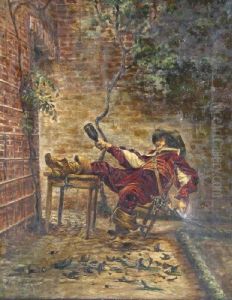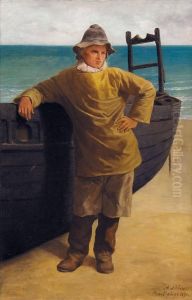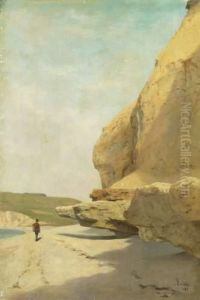A. Leloir Paintings
Alexandre-Louis Leloir, often referred to as A. Leloir, was a French historical painter born on November 19, 1843, in Paris. He was part of a family deeply entrenched in the arts, with both his father, Jean-Baptiste Auguste Leloir, and his grandfather, Alexandre-Marie Colin, being accomplished painters. Additionally, his uncle, Albert Leloir, was an architect, and his brother, Maurice Leloir, became a well-known illustrator and costume historian.
Leloir showed artistic promise from a young age and was trained by his father. He exhibited a strong penchant for historical and genre painting, which was fueled by his deep interest in history and the bygone era's fashion. He was also influenced by the Romanticism movement, which was prevalent during his early years. Leloir made his first appearance at the Paris Salon in 1863, the primary annual event for artists to showcase their work in France, and he continued to exhibit his art there throughout his life.
His works often depicted scenes from French history with an emphasis on the Renaissance and Medieval periods, characterized by meticulous attention to detail, especially in the costumes and settings. One of his significant works includes 'The Death of Philippe III' (also known as 'The Death of Philippe le Hardi'), which garnered him a first-class medal at the Salon in 1871. Alexandre-Louis Leloir's paintings were celebrated for their narrative quality, which brought historical moments to life with drama and authenticity.
Despite his success, Leloir's career was cut short by his untimely death on September 19, 1884, in Paris, at the age of 40. Although his life and career were brief, he left an indelible mark on the art world through his historical paintings. His works continue to be appreciated for their historical accuracy and artistic craftsmanship, and they remain a testament to the 19th-century French art scene.


